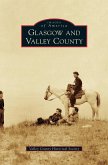The bountiful variety of plants, wildlife, water, and fertile soil found in Montana's Rock Creek Valley has attracted people for centuries. The Apsaalooke--predecessors of the Crow Indians--migrated to the region in the 1600s. The valley's next influx of settlers came after the Crow accessioned land for homesteading in 1892. But long before it was open to settlers, John Colter and other fur trappers crisscrossed the region during the 1830s. John Bozeman and Jim Bridger charted the Bozeman Trail through the Rock Creek Valley in the 1860s. James "Yankee Jim" George discovered coal deposits near Red Lodge in 1866, which brought the Northern Pacific Railway in 1889; an industrial boom followed. Emigrants from Finland, Italy, Austria, and Scotland as well as pioneers from the East and Midwest started farming communities in Fox, Roberts, Boyd, and Joliet, all of which grew into major shipping points for grain, beans, sugar beets, hay, poultry, and wool. Further upstream, in Red Lodge, tourism supplanted coal as the predominant industry with the opening of the Beartooth Highway to Yellowstone Park in 1936."








